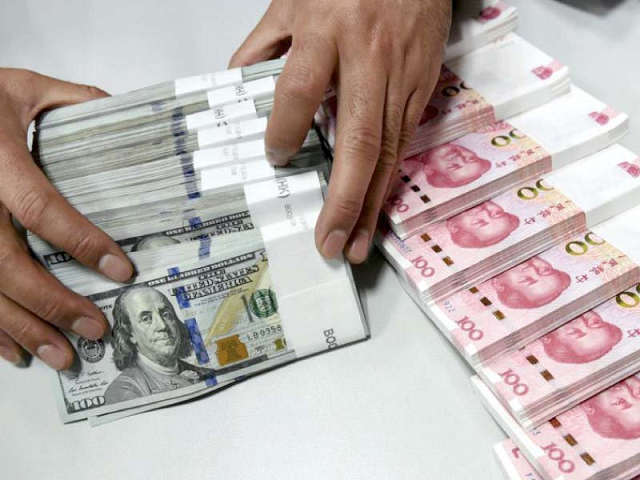
The State Bank of Pakistan (SBP) has largely tapped $1.5 billion in additional trade financing facility available under the China-Pakistan currency swap arrangement, said sources in the central bank and the Ministry of Finance.
The central bank has used the facility at a time when caretaker Finance Minister Dr Shamshad Akhtar is trying to find balance between inflows and outflows for June and July.
China lends unequivocal support for safeguarding Pakistan’s national independence
The central bank tapped the facility to repay over $1 billion in maturing foreign loans, mainly obtained from foreign commercial banks. The exact amount of the Chinese facility that Pakistan used could not be ascertained, but an SBP source said it was around $750 million.
China has become the country’s largest creditor for the past couple of years, replacing all international financial institutions that are holding back policy loans. So far, Beijing has given about $3.8 billion in commercial and project loans, excluding the $1.5-billion currency swap arrangement.
In the current fiscal year 2017-18, China has given about 40% of total foreign loans.
On May 25, the SBP announced that the currency swap arrangement with the People’s Bank of China had been extended for three years in respective local currencies. The trade financing facility was also enhanced from $1.5 billion to $3 billion in dollar terms. Pakistan had earlier fully utilised the $1.5-billion facility.
China wants better Indo-Pak ties, cooperation in SCO
The currency swap agreement was originally directed at facilitating traders of the two countries, but Pakistan is using this window to inflate its foreign currency reserves.
The SBP’s decision to tap the Chinese trade facility for debt payment has temporarily stopped the downward trend in official foreign currency reserves. For the week ended June 1, the SBP reported a net increase of $8 million in the reserves.
Pakistan’s foreign currency reserves increased to $10.04 billion by June 1, according to the data issued by the SBP. The reserves included the $6.4 billion booked in forward contracts.
However, the problem with using the trade facility for shoring up the reserves is that the country will have to return the loan in Chinese currency after three years. It will then use the dollars it holds to buy Chinese yuan from the market, which will have a direct impact on the reserves.
The government will have to pay a higher mark-up, meaning this will be an expensive undertaking. Sources in the central bank said the reserves had fallen to $9.6 billion, which again bounced back to $10 billion.
Pakistan turns to China for high-end weapons: report
The main worry for the new finance minister is to keep the country afloat till the upcoming general elections, said sources in the finance ministry.
At the weekend, the ministry officials remained busy balancing outflows and inflows for June and July, the sources added.
Their estimates suggested that excluding the impact of current account deficit in June, the official outflows were still higher than inflows, estimated at around $1 billion. The inflows do not include $500 million to $1 billion that Pakistan may get from China in the shape of deposits from the State Administration of Foreign Exchange (SAFE).
Central bank and finance ministry authorities are projecting a minimum $2-billion current account deficit in June, the sources said. This means even if the SAFE deposits reach Pakistan, the gross foreign currency reserves will be around $9 billion.
At this level, the reserves will not be sufficient to cover two months of imports. This, in turn, could put the rupee under pressure.
The previous Pakistan Muslim League-Nawaz (PML-N) government had put off decision on adopting another IMF programme by taking expensive short-term foreign loans in an attempt to avoid reforms and gain political mileage in elections. The country is now paying the price.
The problem with the caretaker government is that it cannot enter into a long-term arrangement with the IMF, although negotiations are expected to begin by the end of this month under Article-IV.
Published in The Express Tribune, June 10th, 2018.
Like Business on Facebook, follow @TribuneBiz on Twitter to stay informed and join in the conversation.













































COMMENTS (4)
Comments are moderated and generally will be posted if they are on-topic and not abusive.
For more information, please see our Comments FAQ